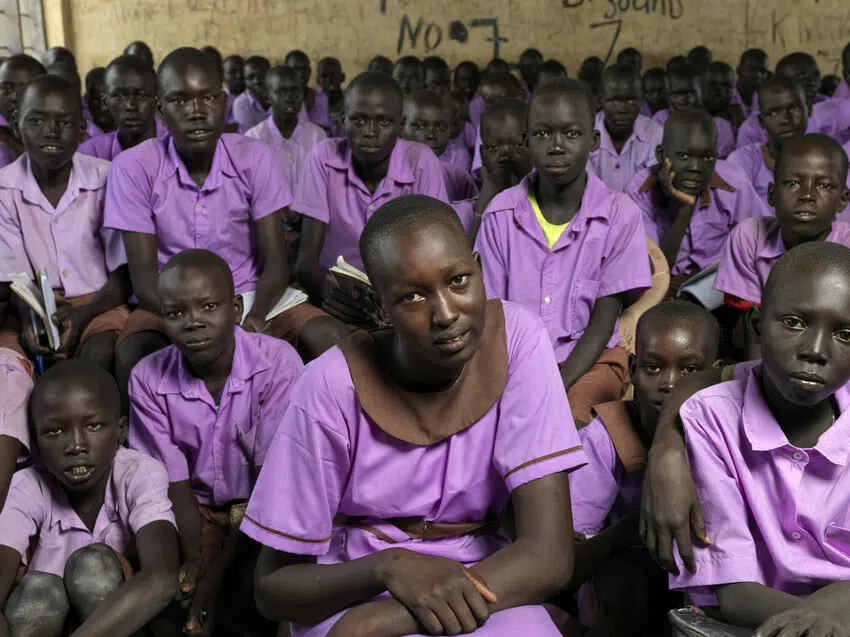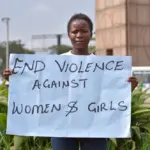Media Centre - Media release - 25 October 2022
Plan International Australia responds to the 2022-23 Australian Federal Budget

In response to tonight’s federal budget, handed down by Treasurer Jim Chalmers, Plan International Australia CEO Susanne Legena said:
“We congratulate the Albanese Government on its commitment to rebuilding Australia’s foreign aid program, and warmly welcome the additional $1.4 billion in aid and development.
“This is a clear signal that the Labor Government recognises the critical role that the international development program plays in our foreign policy and engagement. The inclusion of an additional $900 million for aid and development in the Pacific demonstrates ongoing support of our closest neighbours and shows that we are stepping up as a global leader.
“However, while increased aid in our region is very welcome and long overdue, it is absolutely essential that Australia steps up and supports those on the brink of famine in the Horn of Africa, who are staring down the barrel of one of the worst humanitarian crises the world has seen in a generation. Australia is still falling far short of the $150 million we could and should be providing in desperately needed emergency assistance to prevent 50 million people from dying from starvation. The urgency around this cannot be overstated.
“Plan International Australia is united with humanitarian agencies through the Help Fight Famine coalition, and we urge the government to act now and build on its initial $15 million famine prevention package to save lives now.
“Tonight’s announcement is just the start in the revitalisation of the Official Development Assistance (ODA) and we look forward to the next stages: in particular, a new international development policy and a plan to rebuild ODA to reach 0.5% of Australia’s Gross National Income target.
“Development assistance remains one of the most impactful investments alongside diplomatic efforts to influence and support equity, peace and economic development in the region and the world over.
Gender responsive budgeting
“It is excellent to see the return of gender-responsive budgeting and we look forward to this being implemented across all departments. It’s critical that our federal budget as a whole recognises the different ways women, girls and gender diverse young people are impacted by budget decisions, and gender responsive budgeting means that decisions are made with this in mind.
“We welcome the reintroduction of the 80% performance targets to ensure Australia’s aid investments address gender equality, and particularly the commitment to ensure that any aid investments over $3 million have a gender equality objective. This is a fantastic step. We also welcome the continuation of the Gender Equality Fund, and look forward to seeing how the additional funding in the Pacific and Southeast Asia will support gender equality.
“We know that this funding is critical, given the devastating setbacks to rights and freedoms of girls over the past few years due to COVID-19, conflict and the climate crisis. When times are tough, girls are the first to be pulled out of school and many do not return. They experience poverty and inequality in different and disproportionate ways to adults. We simply cannot afford an entire generation of girls being lost to secondary education.
”There are over 500 million adolescent girls aged 10-19 living in developing countries, with over half in the Asia Pacific region. The participation, education and safety of these girls is vital to economic development, gender equality and climate action regionally and across the world. The 10-year-old girl is the single most powerful investment we can make, according to the UN. If we can unlock her potential , we can create the economic and social conditions needed to achieve the 2030 Agenda for Sustainable Development, unlocking a better world for everyone.
“Yet our recent research has revealed that less than 5% of ODA currently specifically targets adolescent girls. Although critical to climate action and gender equality, the distinct needs of adolescent girls are often overlooked in Australia’s aid and development program, and they fall through the cracks of traditional efforts designed for women, younger girls and children. This is a critical time when they are at most risk of being pulled out of school, child and early forced marriage, early pregnancy and labor exploitation. We look forward to working with the Government to ensure that the needs of adolescent girls are considered in the implementation of the Gender Equality Fund in 2022/23 as well as in the rest of its aid commitments.
“We also welcome the $1.7 billion of funding that will be allocated to women’s safety in Australia over the next six years. This will enable critical reforms to tackle the complex and intersecting factors – cultural, social, political and economic – that drive violence, harassment and abuse against women and their children. After so many years of victim survivors, gender-based violence experts and community leaders advocating for urgent change, it is time to honour their bravery and their voices – especially those we have lost.
The climate crisis
“Climate change is the single greatest threat to the livelihoods, security and well-being of people in the Asia-Pacific region, and disproportionately impacts girls. While the Government has announced a $137.2 million commitment to climate change and the environment, we stress the need for inclusive climate adaptation and mitigation investments that centre the needs and leadership of girls and women, given the disproportionate impact it has on them.
“Climate change impacts increase the barriers and risks already facing girls. If current trends continue, by 2025 climate change will be a contributing factor in preventing at least 12.5 million girls each year from completing school. This will further entrench existing gender gaps in education and prevent them from gaining the necessary knowledge and skills for community-based adaptation, disaster risk resilience, leadership and future secure livelihoods. Girls and young women are leading climate action in their communities, and they deserve to be recognised and supported in the government’s climate commitments.
Media contacts


